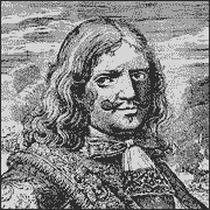|
The first Spanish settlement in the Pacific coast of America was established in what became the city of Panama, in August of 1519. Given its strategic geographical location, it was of most importance to the Spanish crown because most, if not all, of the gold and other treasures coming from Peru and other South American colonies, passed through and were sometimes stored, as they made their way on to the Caribbean coast, then on to Habana (Cuba) and then proceeded on their voyage to Spain.
Morgan had successfully attacked and overtaken the Caribbean post of Portobelo (Porto Bello) in 1668 with his fleet of 10 ships and 500 men. By January of 1671 and after taking the fortress of San Lorenzo in the Caribbean coast of Panama, Morgan along with 1,400 of his men, descended the Chagres River towards the Pacific coast and Panama City. He skillfully divided his forces which quickly dominated the 1,500 or so Spanish infantry and cavalry defending the city. When locals heard of Morgan and his men hacking their way through the jungle across the isthmus, they started hiding their possessions and some fled in wooden boats to the Azuero region. A lone priest by the name of Juan hatched a plan to preserve Panama’s golden altar. The main parts of the altar were disassembled, and it is said that the golden columns and altar tables were taken out into the bay and submerged. The rest of the altar could not be moved so priest Juan, along with other townspeople prepared a paint mixture made up of mud and black oil, and worked all night to cover the altar in order to somehow disguise it and protect it from the coming pirates. As Morgan entered Panama City plundering, pillaging and burning, the inhabitants fled into the jungle, but priest Juan remained behind, determined to protect the church. The pirates ran thru the city in the early morning hours of January 18, 1671, taking whatever they could find and killing those who stood in their way. Increasingly frustrated because he could not find the golden altar he so vehemently sought, Henry Morgan stepped into the church where he saw an old priest by a black altar and asked where was all the gold, jewels and the golden altar hidden.
Since the pirates didn't find what they came looking for, they destroyed buildings and burned the city to the ground. In 1673 the city was moved to the more fortified and defensible area where it is today. The new Iglesia de San Jose was built in this area in 1675 and remains there, along with the golden altar (Altar de Oro), to this day. Above ↑ - Panama City as seen from the Casco Viejo, the location from which the new city was built in 1673. Night view of an area in the very modern city of Panama, at night.
1 Comment
|
About
|
MARIO SALAZAR PHOTOGRAPHY & MEDIA SOLUTIONS





 RSS Feed
RSS Feed

